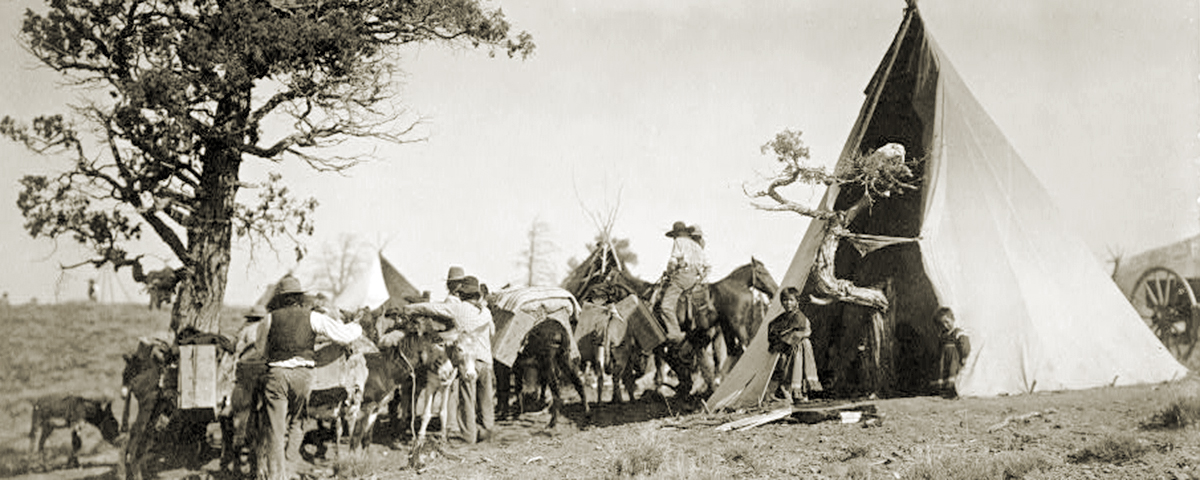Kit & the Jicarillas
Cover boy Kit Carson ranks head and shoulders above all other frontier scouts, according to Western history guru Paul Andrew Hutton. Carson the soldier is almost as well known, though hardly remembered fondly in some Indian circles for his suppression of the Navajos during the Civil War years. But historians have largely overlooked Carson the Indian agent. For eight years in the 1850s and early 1860s he served as the federal Indian agent for northern New Mexico Territory, maintaining good relations with the Taos Puebloans and Utes but having his hands full with the Jicarillas, whose depredations troubled travelers, settlers and the territorial governor alike.
“The Jicarillas remain one of the least familiar Apache bands, which is ironic, considering they were the first ‘Apaches’ identified by the Coronado expedition in 1540,” says Hutton, who writes about them and their old enemy Carson in this issue, though not in his recently released The Apache Wars. Hutton had devoted considerable space to them in his original book manuscript but needed to do major cutting to meet the publisher’s word limit. “Most of my cuts concerned the period before 1861,” he says. In other words, the far more famous Chiricahua Apaches (think Cochise and Geronimo in Arizona Territory) get top billing, while the Jicarillas “wound up on the cutting room floor.” Hutton still finds the small band (only about 500 people in the 1850s) intriguing. “The name comes from the Spanish for ‘little basket makers,’” he explains, “because of the beautiful baskets made by Jicarilla women. The bucolic name seemed a pretty good joke to Kit Carson, because baskets were the last thing that came to his mind when he thought of the Jicarillas. They were much more active raiders than their more numerous Mescalero cousins to the south.”
Carson’s contempt for the Jicarillas was ingrained by the time he became Indian agent. Back in 1849 he had led a dragoon column into their camp in hopes of rescuing captives Ann White and her baby but arrived a hair too late to be a hero (read Hutton’s “Kit Carson’s Rescue Ride”). “Carson had considerable personal animosity toward the Jicarillas—in part because of the murder of Mrs. White and his regret over his failure to save her,” says Hutton. “On the other hand he was great friends with the southern Utes, despite the fact the Utes often allied themselves with the Jicarillas.” During the Army’s pursuit of the Jicarillas, Carson served as chief of scouts on several 1854–55 expeditions. He believed that capture of their women and children would force the warriors to surrender. But regular troops had trouble catching up with a people who traveled light. “This tactic worked better later against the Navajos,” says Hutton, “because they were far more sedentary than the Jicarillas and owned a considerable amount of property.”
After growing weary of running and fighting, the Jicarillas sought peace and mountain land they could claim as their own. That last wish was slow in coming. “When reservations were finally being established for the Apaches after the Civil War,” says Hutton, “the Jicarillas were essentially overlooked.” The feds ordered their relocation to the Mescalero Apache Indian Reservation in 1883, but they bolted after three years. “General Nelson Miles, busy with Geronimo in 1886, could ill afford a war in New Mexico, and so he urged the establishment of a reservation in the Jicarilla homeland,” Hutton adds. “That reservation [tribal headquarters at Dulce, N.M.] was eventually expanded, and the discovery of oil and natural gas on their land led to some prosperity for the Jicarilla people.” We reckon not even Kit Carson would have objected. WW
Wild West editor Gregory Lalire wrote the 2014 historical novel Captured: From the Frontier Diary of Infant Danny Duly. His article about baseball in the frontier West won a 2015 Stirrup Award for best article in Roundup, the membership magazine of Western Writers of America.





